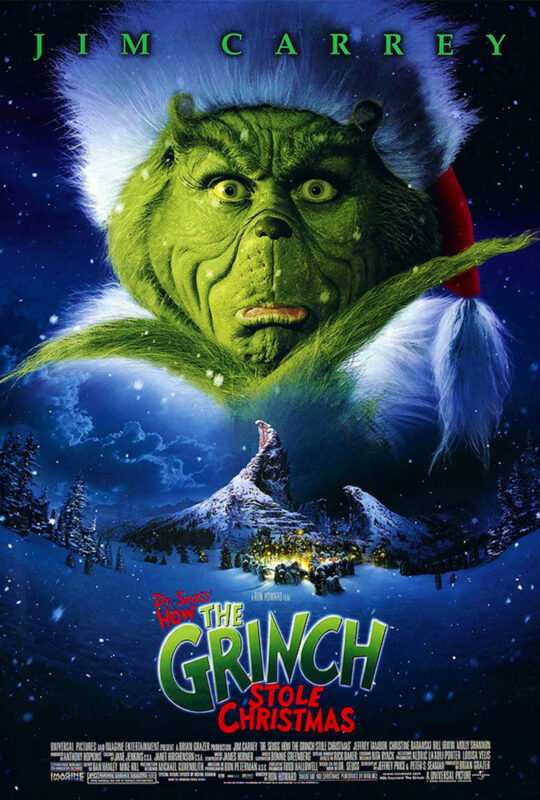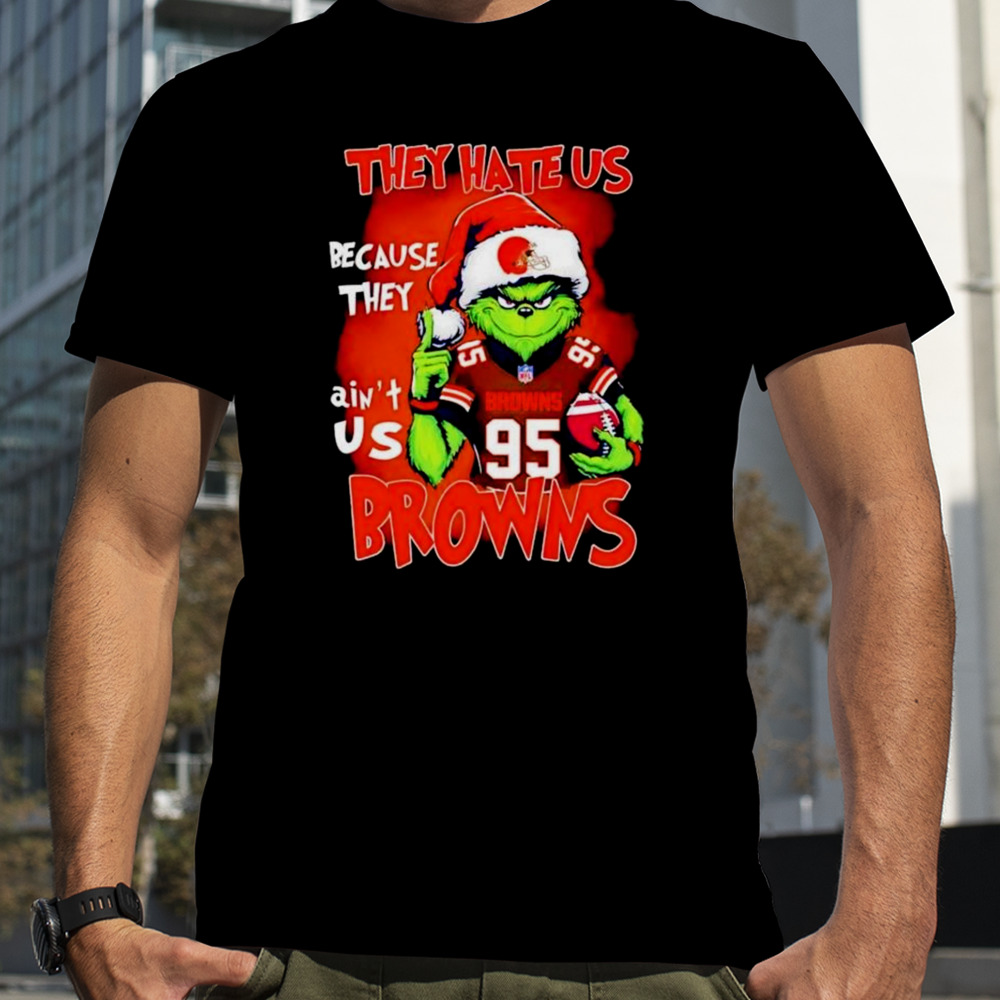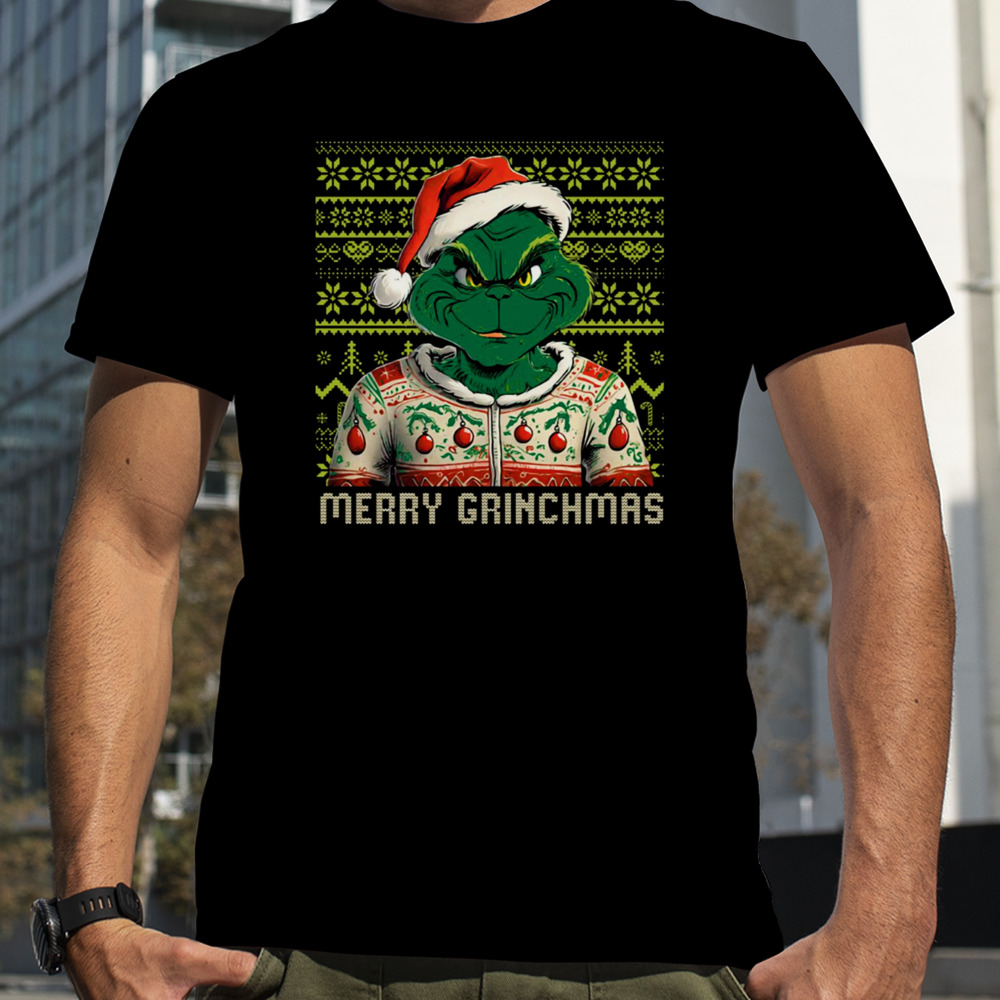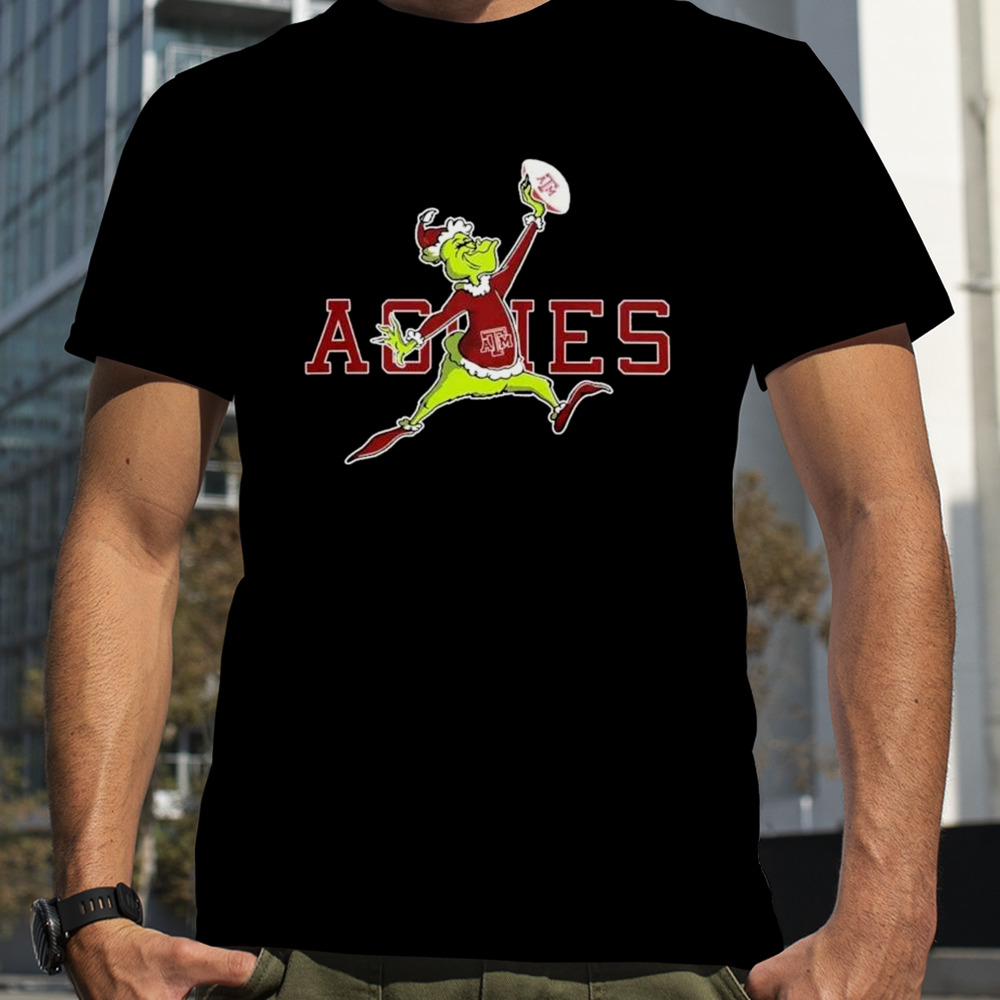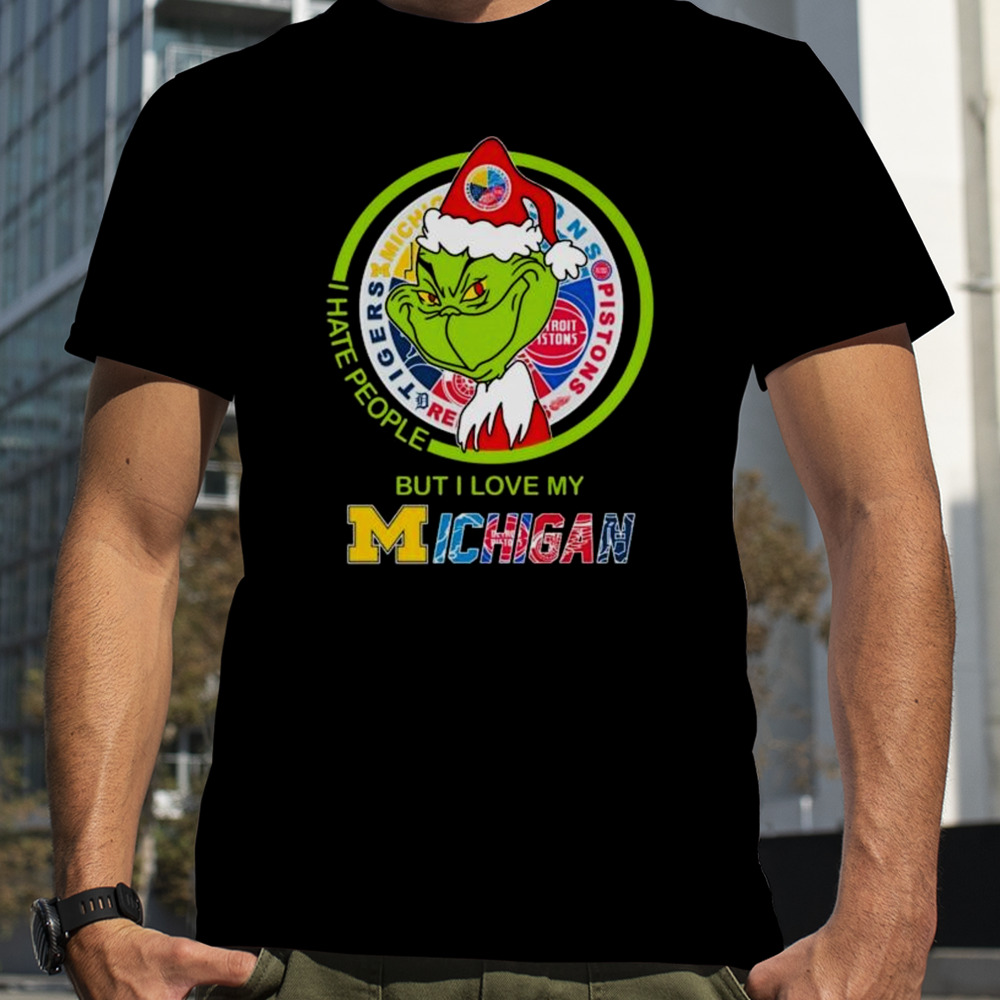The Grinch (How the Grinch Stole Christmas)
A new, official sequel to Dr. Seuss’ How the Grinch Stole Christmas misunderstands what gave the character his disgusting power.

He nauseates us. His head’s not screwed on right. His soul is an appalling dump heap overflowing with the most disgraceful assortment of deplorable rubbish imaginable. He’s got garlic in his soul, and his heart is two sizes too small. The Grinch was introduced in Dr. Seuss’ instant bestseller How the Grinch Stole Christmas!, published in 1957. The 1966 TV adaptation is a classic, the 2000 live-action film and 2018 animated film less so—though each made hundreds of millions of dollars. A musical version even hit New York in 2006, ending Wicked’s nearly two-year streak atop the Broadway box office.
The Grinch Santa I don’t think before I speak I like being just as surprised as everyone else Christmas 2023 Sweatshirt
Grinch Santa rock paper scissor throat punch Christmas shirt
But what happens after the Grinch steals, and then returns, Christmas? A new picture-book sequel, authorized by the Dr. Seuss estate, attempts to answer that question, and grow the lucrative property even further. But opening the perfectly adequate Dr. Seuss’s How the Grinch Lost Christmas!, which is written by Alastair Heim and illustrated by Aristides Ruiz, made me wonder: Who even is the Grinch? Why is he so disgusted by the residents of Who-ville? And why has Theodor Seuss Geisel’s green-furred holiday hater ruled the Yuletide season for nearly 70 years? Could it be that the Grinch is … a little bit … right?
Dr. Seuss thought so. “I’m really on the Grinch’s side,” he said. “I was cheering for this guy.” Years later, he told a newspaper reporter, “I did this nasty, anti-Christmas character that was really myself.” Geisel long made a living in advertising but found the commercialism of the holiday season distasteful. As Brian Jay Jones chronicles in Becoming Dr. Seuss, the idea for the book came about the day after Christmas, when Geisel was surprised by his own scowling face in the bathroom mirror. “I wrote a story,” he said, “to see if I could rediscover something about Christmas that obviously I’d lost.” Whom did he recognize in that scowl? “It was Seuss.”
Grinch Myles Garrett Browns They Hate Us Because They Ain’t Us Christmas T-Shirt
After a short, prologue-ish single page setting the scene—“Every Who / Down in Who-Ville / Liked Christmas a lot …”—Seuss first introduced the Grinch to readers in a full-page illustration that still makes me laugh every time I see it. The Grinch stands leaning against the snowy entrance to his cave like the neighborhood crank, one leg crossed over the other. He looks as if he’s about to scold you for your toddler having too much fun on his lawn. His fingers are tucked into large pockets in his fur, somehow, the pinkies extended delicately to rest on his large belly. (The question of whether the Grinch is furry or is wearing a fur suit is one on which canonical works diverge; the 2018 animated movie muddies the waters further by showing the Grinch sleeping in tighty-whities, over which he pulls a pair of pants the exact same shade of Grinch-green as his legs.)
It’s on this page that Seuss famously muses on why the Grinch is so mean. “No one quite knows the reason,” Seuss writes, whether his head isn’t screwed on right, or his shoes (fur shoes?!) are too tight. Seuss confides in us, though, the real reason: His heart is two sizes too small. That is to say, it’s not that something happened to him to make him the Grinch. He just is the Grinch. Some people are just jerks.
The Grinch frets about the coming Christmas in Who-ville, when the Whos will celebrate the holiday in ways that drive him to distraction. Fifty-three years he’s been dealing with this Christmas bullshit—Geisel turned 53 in 1957—and he has had it up to here. And then comes the two most stupendous pages in the book, the spread that is the most fun to read out loud and which supplies the book with its cover image. It’s the moment when the Grinch has his idea. His awful idea. His WONDERFUL, AWFUL IDEA. We see him at the instant of inspiration, red eyes gleaming, fingers a-twiddle, sly smile curling, the idea springing from his furry noggin in a jagged explosion of red. When you read the book to a small child, you pause here, and you ask, “What was his idea?” And the child says, astonished, “He’s going to steal Christmas.”
Grinch Christmas Pattern Christmas shirt
Joe Biden Grinchmas Grinch Christmas shirt
The pages that follow, in which the Grinch, dressed as Santa, visits the first Who house and shoves every last bit of Christmas crap up the chimney, are fascinating. Seuss lingers over the Grinch’s thievery for eight two-page spreads, nearly a third of the entire book. Far more of How the Grinch Stole Christmas! is devoted to the Grinch stealing Christmas than to, say, the Grinch changing his ways and learning to love the holiday. That’s because Geisel knew what he had. Children lose it at these pages. The gleeful terror they emit as the Grinch purloins every present from under the tree could power a city. The presents! The very things they have been dreaming of, obsessing over, for weeks—all gone! And the Grinch follows it up—after a deft lie told to poor Cindy-Lou Who—by taking the tree itself.
The artistry in the book lies, I think, in the disparity between children’s horrified awe at the prospect of Christmas erased and every parent’s grim recognition of the Grinch’s dark appeal. Many a parent has discovered, reading the book aloud, a certain malevolent zing in performing the Grinch, because the stress of the holidays can, at times, activate the Grinch in all of us. Three hundred and sixty-four days of the year, we insist to our kids that possessions aren’t important, and then, on Christmas morning, Santa’s largesse hits them like toxic waste. They mutate instantly into acquisitive monsters, ripping the paper off presents and tossing them aside after only a moment’s pause to get to the next.
Though he never had children of his own, Seuss gets it. “All the Who girls and boys / Would wake bright and early,” the Grinch predicts. (Probably before dawn, parents know.) “They’d rush for their toys! / And then! Oh, the noise! Oh, the Noise! Noise! Noise! Noise!” The lines accompany a very funny, very nightmarish two-page spread of Who children, their faces rictuses of delight, banging on drums and skiing down steps and blowing on horns and whacking balls with mallets and tooting train whistles and ringing bells and simply shrieking with uncontained joy. To a parent deep in the madness of Christmas, it’s a hellish landscape worthy of Hieronymus Bosch.
Santa Grinch Pittsburgh Steelers What Did You Expect Christmas T-Shirt
Texas Aggies Santa Grinch Air Jordan Rugby Christmas T-Shirt
Nebraska Cornhuskers Santa Grinch Air Jordan Rugby Christmas T-Shirt
We parents love Christmas, of course. Love it. But, we notice with idle admiration, the Whos’ house looks so clean when the Grinch is done with it.
The Grinch was published in November 1957, just eight months after The Cat in the Hat—surely the best two-title year for a single author since 1606. The one-two punch made Seuss—who just three years before had worriedly written his editor, asking if she thought he might be able to earn $5,000 a year—rich and famous. The new books sold into the millions; his backlist boomed as well. In 1958, for example, Horton Hatches the Egg, originally published in 1940 and essentially not being printed at all by the late ’50s, suddenly sold 27,463 copies. Dr. Seuss got so much mail—estimated at more than 9,000 pounds’ worth one year—that, per Jones’ biography, Geisel asked Random House to forward him only the letters from teachers, librarians, and sick children.
In 1966 Geisel teamed up with the brilliant animator Chuck Jones—the man responsible for your favorite Road Runner cartoons—to bring the Grinch to television. To expand the short book into a full 25 minutes required some invention, and the additions seem, now, to always have been part of the Grinch’s story. Like poor, set-upon Max the dog, “both observer and victim,” as Jones called him, who loves the Grinch even though that green nightmare literally whips him. (The bit when the Grinch whistles and a joyous Max bounds to the front of the sleigh, tail a-wag, gets me every time.) And the song, “You’re a Mean One, Mr. Grinch,” with lyrics by Geisel and a lead vocal growled by the perfectly named Thurl Ravenscroft. And the beautiful, iconic image of the Grinch’s heart swelling three sizes—so quickly that it breaks through the whimsical X-ray frame intruding upon the screen. (A pure Chuck Jones moment if ever there was one—surely the device was manufactured by the Acme Corporation.)
Geisel had struggled with the story’s ending while writing the book, worried that he would descend into “sloppy morality.” He was proud of the turnabout he’d invented: the Grinch realizing Christmas “doesn’t come from a store,” sailing back into Who-ville, and carving the roast beast. Now, making the TV special, he stretched the ending out. The production designer Maurice Noble came up with a kind of nonreligious Christmas star that rises from the circle of singing Whos in Who-ville, floats up Mount Crumpit, and illuminates the Grinch, turning his red eyes blue and filling him with the spirit of the holiday. That spirit, notably, is entirely secular. Geisel had laughed at religious readers who confidently hailed the book’s Christian point of view. The special ends with the narrator quoting the Whos’ Christmas song, which makes it clear that the season is about not God but togetherness: “Christmas day is in our grasp—so long as we have hands to clasp.”
The less said about the 21st-century movies, the better. The Jim Carrey Grinch is a torturous ordeal of horny Whos and Carrey shouting, “Fabuloussss!” The computer-animated film is perfectly serviceable, though, like the live-action version, it insists upon giving the Grinch a tragic orphan backstory. But of course the Grinch is not mean because of his childhood. He is not grouchy only during the holidays, mourning lonely bygone Christmases. The Grinch is horrible all the time. The Grinch is a three-decker sauerkraut-and-toadstool sandwich with arsenic sauce. The Grinch is grinchy because he is the Grinch.
Florida State Grinch Air Jordan Semroles Rugby Christmas T-Shirt
Santa Grinch I Hate People But I Love My Michigan Sports Team Christmas Shirt
How the Grinch Lost Christmas! takes place one year after the Grinch’s mountaintop revelation. The Grinch is anxious to prove to the Whos that he’s a new man. Once again, the Grinch is thunderstruck by an idea—“AN AWFULLY CRAFTY IDEA”—although this time the idea is simply that he should win the town’s tree-decorating contest. (The artist, Aristides Ruiz, does a remarkable job distinguishing the sequel Grinch’s idea from the original Grinch’s idea. His smile is 10 percent less diabolical, and his eyes—yellow now, not red—look upward in inspiration, not schemingly sideways.)
The Grinch’s tree is indeed magnificent, but he does not win the contest. Who wins instead? Little Cindy-Lou Who, who is, I suppose, now not more than 3. Ruiz draws her as a cute little blond girl in a red bow, in the spirit of the animated movie, which made Cindy-Lou an adorable spitfire—whereas in the original book, Cindy-Lou, like all the Whos, is sort of repulsive, complete with antennae. (Geisel argued with his wife over whether the Whos were human at all, or actual bugs.)
The Grinch is shocked not to win. His heart turns ice-cold. “He felt it start SHRINKING!” Alastair Heim writes. In a huff, the Grinch storms out of town as the citizens look on, speechless. Cindy-Lou calls up to the Grinch, telling him that her tree sports an ornament donated by every resident of Who-ville—except one. The Grinch regains his Christmas spirit, returns with an ornament for Cindy-Lou’s tree, and, himself, places the first-place crown on Cindy-Lou’s head.
The book, I suppose, offers a moral about extravagant Christmas displays, and as November arrives and the first of my neighbors cover their houses in thousand-dollar LED extravaganzas, it’s a not-unwelcome message. But it’s a bit of a disappointment to see the Grinch reduced to the role of child throwing a tantrum. Losing a contest and storming off in a huff is certainly relatable to kids—indeed, more than one cheery holiday get-together in my house has been darkened by a child doing that exact thing—but it’s not diabolical. It’s not stealing the freaking Christmas tree. It’s hard to imagine a child listening to this sequel with the same fear and trembling with which they respond to the original. More likely, kids will nod sagely and identify the Grinch as that most familiar of childhood archetypes: the sore loser. It’s a dispiriting fate for perhaps the greatest elemental force of malevolence in children’s literature.
I’m sure Random House and Dr. Seuss Enterprises LP dream of this new book unlocking an entire Seussiverse of new Grinch stories, in which the showcase character learns to embrace the spirit of Thanksgiving, being true to yourself, free and open elections, etc. Though I started this sequel fascinated by the evolution of the Grinch, his miraculous turn to good is far less interesting now that he’s revealed as a petulant pushover, losing and regaining the spirit of Christmas at the drop of a hat. If anything, the sequel has made me less interested in the Grinch and more interested in the fate of the creatures he’s terrorized over and over, for 66 Christmases and counting.
Imagine being a Who, I thought, reading How the Grinch Lost Christmas! You’re neither bug nor man but some species so odd it must be italicized. Nevertheless, you really love Christmas, to the point that a Christmas tree contest is the A1 story in the Who-ville News. You live in a picturesque village that is constantly under threat from the creature who lives up the mountain, a real un-jolly green giant. (The new book makes it clear that even the quite-tall mayor of Who-ville comes up only to the Grinch’s distended abdomen.) Don’t any of the Whos ever get tired of living underneath the Grinch, always appeasing his tantrums? Don’t any of the Whos ever get tired of singing their holiday songs, even after this prick empties their General Who-lectric refrigerators of food?
But Theodor Geisel never got tired of his sour green creation. You can still see the Cadillac Seville he drove around La Jolla, California, through the 1970s, a luxurious gray tank as maneuverable as the sled full of presents the Grinch parks atop Mount Crumpit. Dr. Seuss loved that car. Its license plate read GRINCH.

